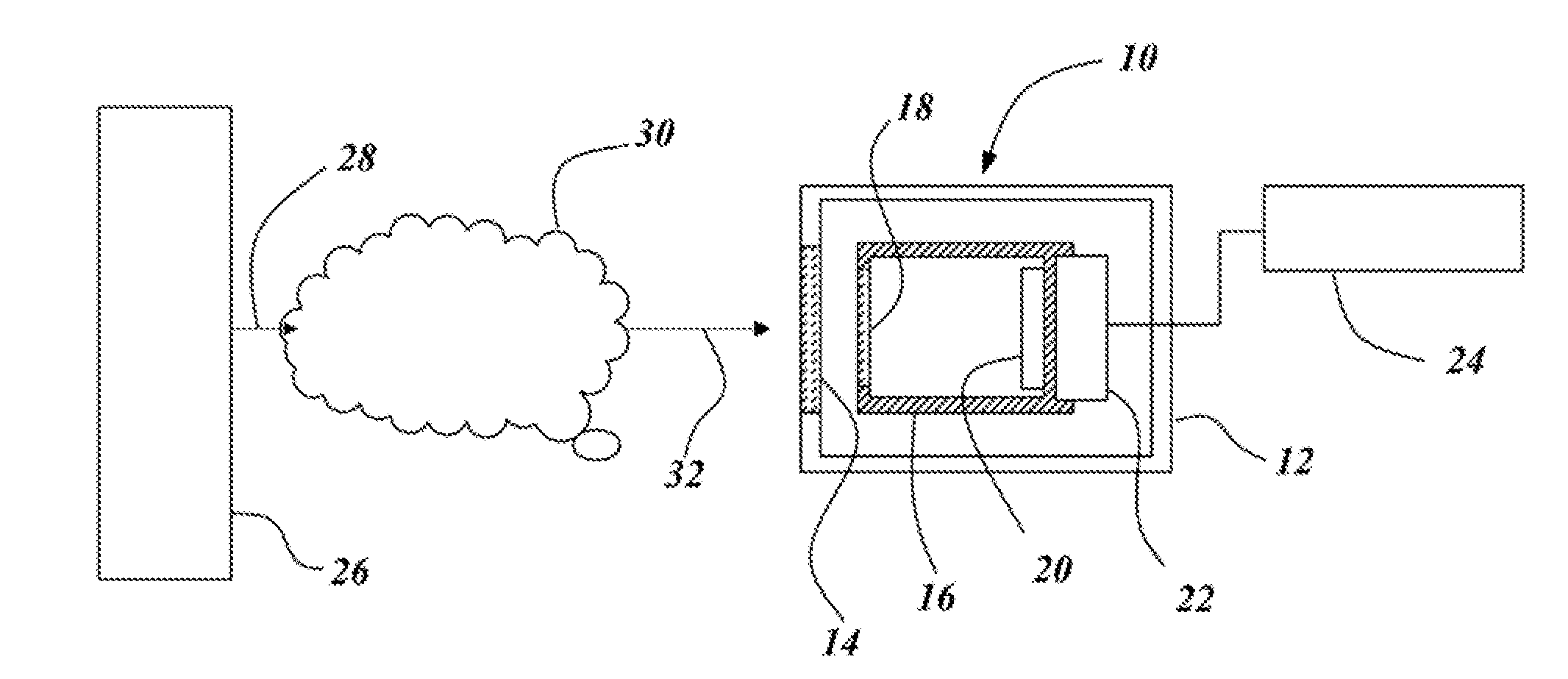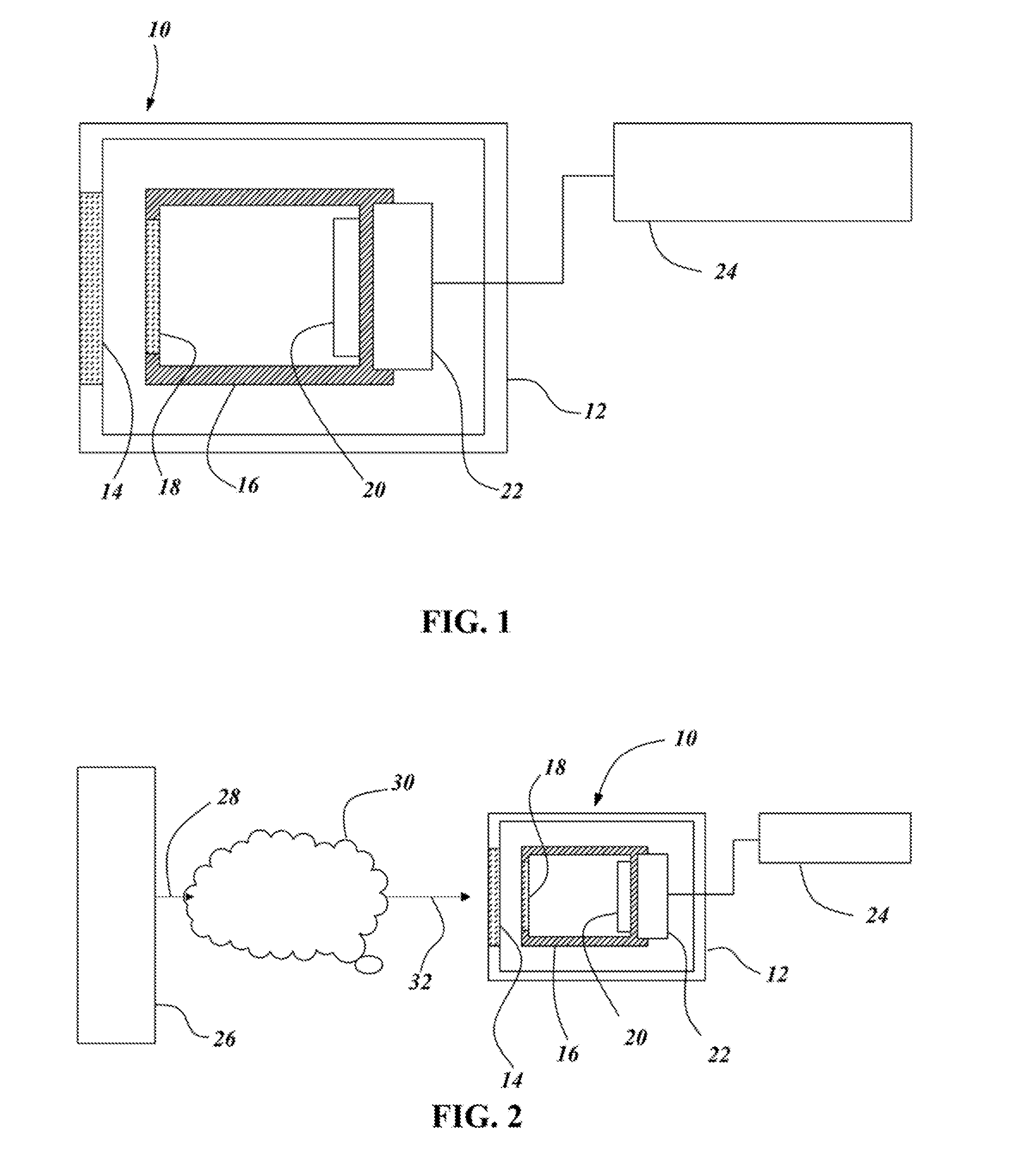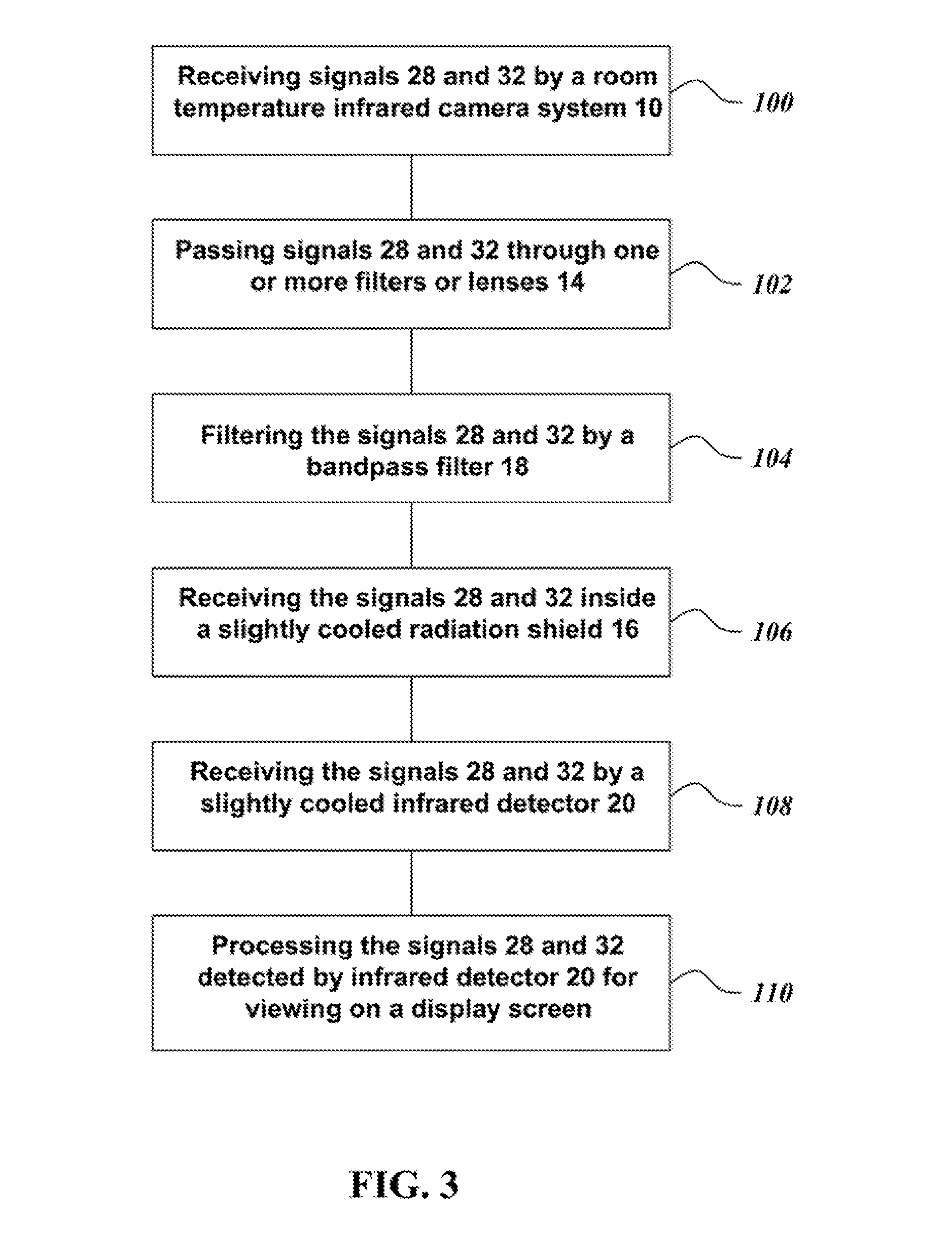Uncooled Infrared Camera System for Detecting Chemical Leaks and Method for Making the Same
a technology of infrared camera and chemical leakage, which is applied in the field of infrared cameras, can solve the problems of significant energy required to maintain an infrared detector, and achieve the effect of improving the signal to noise ratio
- Summary
- Abstract
- Description
- Claims
- Application Information
AI Technical Summary
Benefits of technology
Problems solved by technology
Method used
Image
Examples
Embodiment Construction
[0017]FIG. 1 is a schematic diagram of an uncooled infrared camera system 10, according to a preferred embodiment of the invention. The uncooled infrared camera system 10 is adapted to provide visible imaging of chemical fluids including gases and liquids. The chemical fluid may be a vapor or aerosol suspended in air, or a liquid on a surface. This allows the uncooled infrared camera system 10 to detect chemicals leaked or spilled in the environment.
[0018]The uncooled infrared camera system 10 includes a mechanical housing 12, at least one window or lens 14, a radiation shield unit 16, a bandpass filter 18 and an uncooled infrared detector 20, a thermoelectric cooler 22 and a temperature controller 24. The mechanical housing 12 provides structural rigidity to the uncooled infrared camera system 10 and protects the radiation shield unit 16, the band-pass filter 18, the uncooled infrared detector 20 and the thermoelectric cooler 22. The housing 12 further maintains a controlled enviro...
PUM
 Login to View More
Login to View More Abstract
Description
Claims
Application Information
 Login to View More
Login to View More - R&D
- Intellectual Property
- Life Sciences
- Materials
- Tech Scout
- Unparalleled Data Quality
- Higher Quality Content
- 60% Fewer Hallucinations
Browse by: Latest US Patents, China's latest patents, Technical Efficacy Thesaurus, Application Domain, Technology Topic, Popular Technical Reports.
© 2025 PatSnap. All rights reserved.Legal|Privacy policy|Modern Slavery Act Transparency Statement|Sitemap|About US| Contact US: help@patsnap.com



